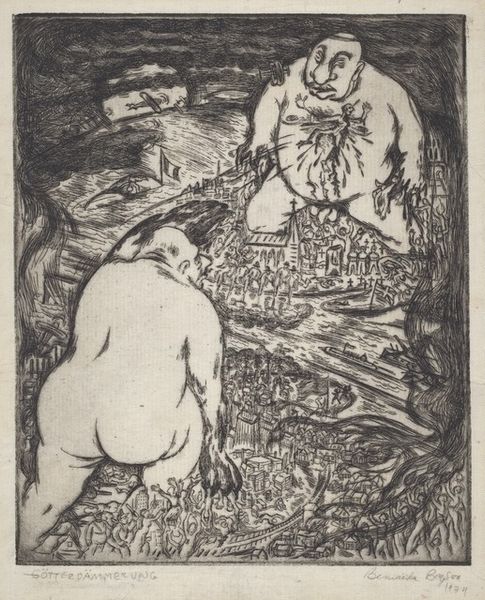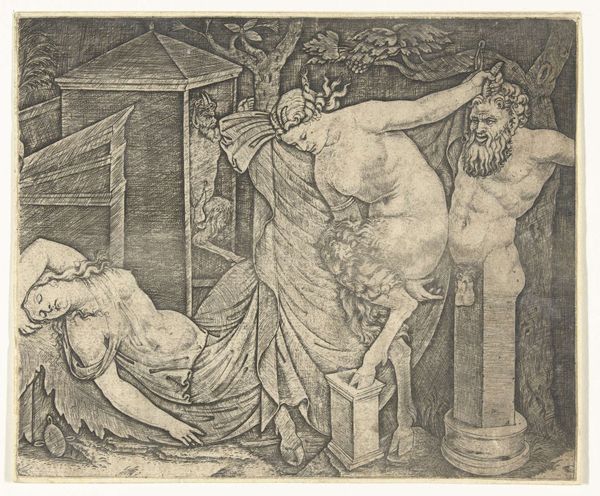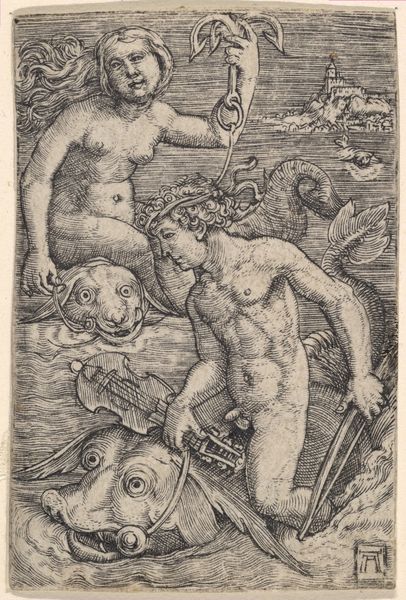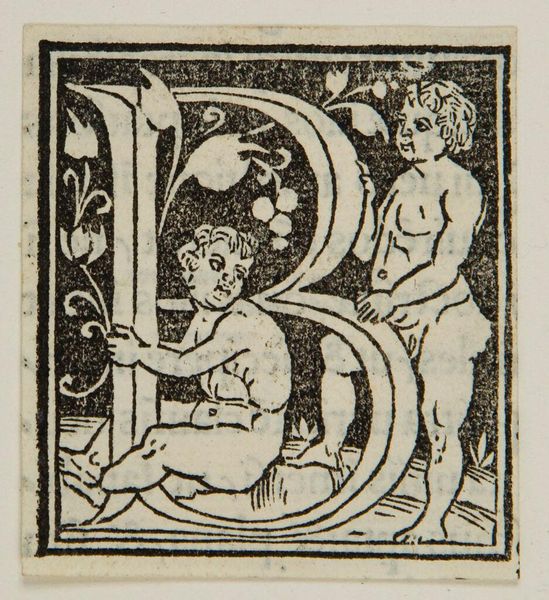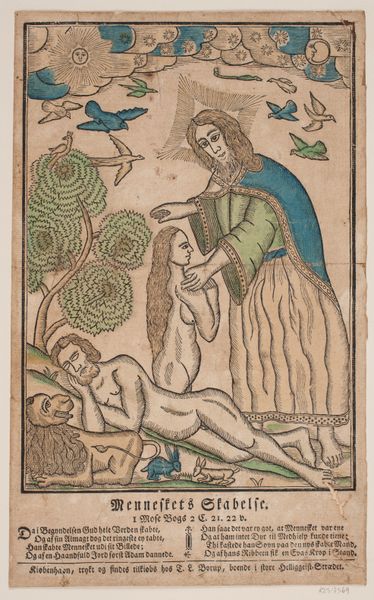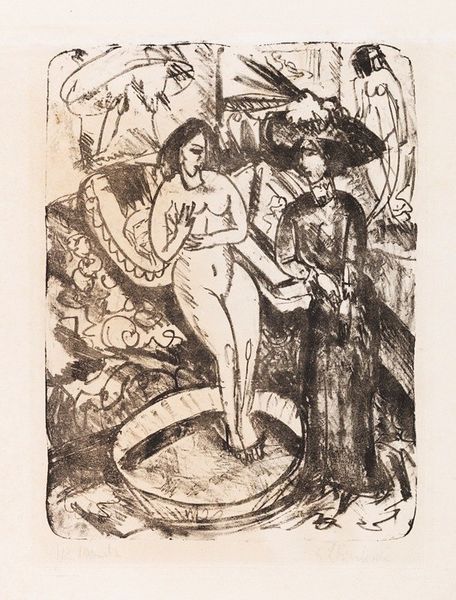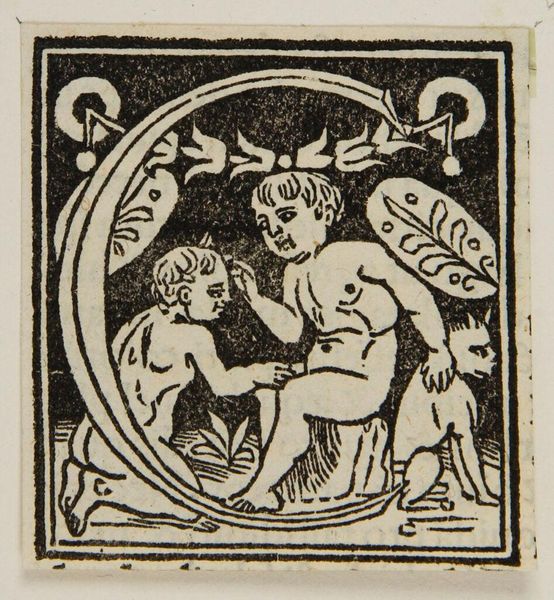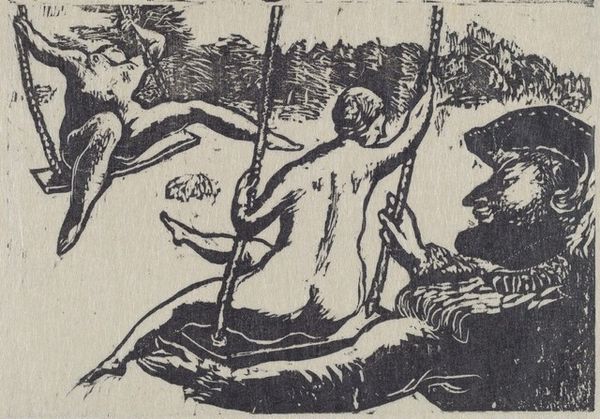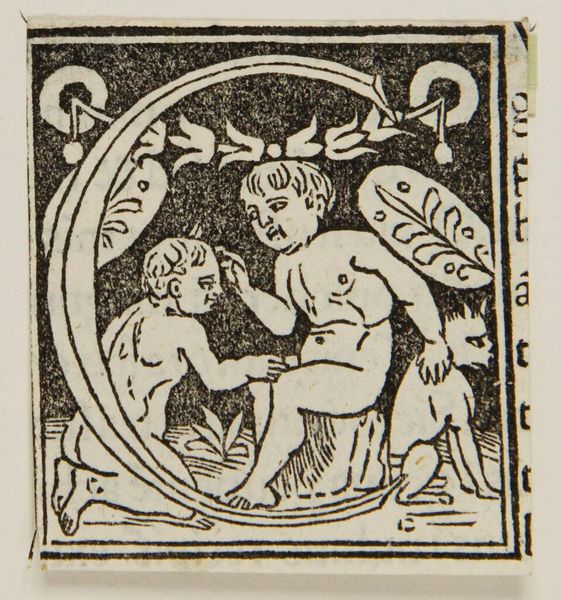
drawing, ink, pen
#
drawing
#
narrative-art
#
pen drawing
#
pen illustration
#
pen sketch
#
landscape
#
figuration
#
ink
#
pen-ink sketch
#
pen work
#
symbolism
#
sketchbook drawing
#
pen
Copyright: Public Domain: Artvee
Editor: Here we have "The Farewell of Odysseus and Nausicaa," a pen and ink drawing made sometime between 1878 and 1938 by Richard Nicolaüs Roland Holst. It feels heavy, full of symbolism. What do you see in this piece? Curator: Well, considering Holst's Symbolist leanings, it's not just a retelling of Homer. Notice the framing. Text boxes surround the central image. “One should part from life, as Odysseus parted from Nausicaa,” and "More blessed than in love." Holst's choices emphasize the cultural idealization of tragic farewells, perhaps reflecting fin-de-siècle anxieties about loss and transition, even empire. Editor: So it’s less about the individuals, and more about the idea of the farewell itself? Curator: Precisely. Think about the social role of art in that era, how these narratives were used to instruct viewers on proper emotional conduct. The stoicism in Nausicaa's posture; the resignation in Odysseus's gaze. Are these genuine emotions or performances of grief for public consumption? How does this piece perpetuate or question existing societal structures of power? Editor: That makes me look at it completely differently! It's not just a scene from a myth, it’s making an argument. A social commentary! Curator: Exactly. By revisiting and reframing a classic tale, Holst engages with contemporary discussions about duty, sacrifice, and the spectacle of emotions. The politics of imagery, remember, often mask themselves as simply "art." What does it mean to illustrate it and frame with written proverbs that make the image an exemplary case study? Editor: This gives me a lot to consider about the painting’s role and the artist's intention. Thanks for the insights! Curator: My pleasure! It’s always rewarding to explore how art intersects with broader cultural and historical contexts.
Comments
No comments
Be the first to comment and join the conversation on the ultimate creative platform.
